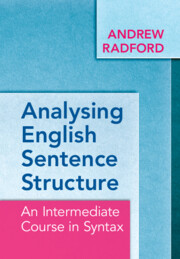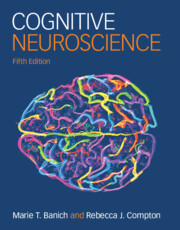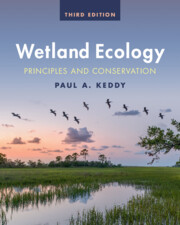Refine search
Actions for selected content:
36901 results in Cambridge Textbooks
11 - Critical Period Effects
- from IV - Language Acquisition
-
- Book:
- A Mind for Language
- Published online:
- 13 October 2023
- Print publication:
- 21 September 2023, pp 381-414
-
- Chapter
- Export citation
2 - The Innateness Hypothesis
- from II - The Never-Ending Debate
-
- Book:
- A Mind for Language
- Published online:
- 13 October 2023
- Print publication:
- 21 September 2023, pp 21-57
-
- Chapter
- Export citation
1 - Global Managers in a Changing World
- from Part I - Foundational Skills for Global Managers
-
- Book:
- Management Across Cultures
- Published online:
- 07 September 2023
- Print publication:
- 21 September 2023, pp 3-24
-
- Chapter
- Export citation
2 - Developing Global Management Skills
- from Part I - Foundational Skills for Global Managers
-
- Book:
- Management Across Cultures
- Published online:
- 07 September 2023
- Print publication:
- 21 September 2023, pp 25-48
-
- Chapter
- Export citation
How to Use This Book
-
- Book:
- A Mind for Language
- Published online:
- 13 October 2023
- Print publication:
- 21 September 2023, pp ix-x
-
- Chapter
- Export citation
Chapter 10 - Mining agreements and revenue frameworks
-
- Book:
- Mining and Energy Law
- Published online:
- 07 September 2023
- Print publication:
- 21 September 2023, pp 339-369
-
- Chapter
- Export citation
4 - Organizational Environments
- from Part II - Contextual Skills for Global Managers
-
- Book:
- Management Across Cultures
- Published online:
- 07 September 2023
- Print publication:
- 21 September 2023, pp 88-126
-
- Chapter
- Export citation
9 - Language Acquisition
- from IV - Language Acquisition
-
- Book:
- A Mind for Language
- Published online:
- 13 October 2023
- Print publication:
- 21 September 2023, pp 293-336
-
- Chapter
- Export citation
2 - Risk Metrics
-
- Book:
- Quantitative Risk and Portfolio Management
- Published online:
- 10 October 2023
- Print publication:
- 21 September 2023, pp 37-80
-
- Chapter
- Export citation
Name and Organization Index
-
- Book:
- Management Across Cultures
- Published online:
- 07 September 2023
- Print publication:
- 21 September 2023, pp 395-397
-
- Chapter
- Export citation
Chapter 7 - Carbon capture and storage
-
- Book:
- Mining and Energy Law
- Published online:
- 07 September 2023
- Print publication:
- 21 September 2023, pp 230-260
-
- Chapter
- Export citation
3 - Philosophy of Mind
- from II - The Never-Ending Debate
-
- Book:
- A Mind for Language
- Published online:
- 13 October 2023
- Print publication:
- 21 September 2023, pp 58-88
-
- Chapter
- Export citation
4 - Equity Modeling
-
- Book:
- Quantitative Risk and Portfolio Management
- Published online:
- 10 October 2023
- Print publication:
- 21 September 2023, pp 123-158
-
- Chapter
- Export citation

Construction Grammar
-
- Published online:
- 20 September 2023
- Print publication:
- 28 July 2022
-
- Textbook
- Export citation

Analysing English Sentence Structure
- An Intermediate Course in Syntax
-
- Published online:
- 16 September 2023
- Print publication:
- 31 August 2023
-
- Textbook
- Export citation

Cognitive Neuroscience
-
- Published online:
- 15 September 2023
- Print publication:
- 19 October 2023
-
- Textbook
- Export citation

Wetland Ecology
- Principles and Conservation
-
- Published online:
- 14 September 2023
- Print publication:
- 28 September 2023
-
- Textbook
- Export citation
Index
-
- Book:
- Introduction to Cancer Biology
- Published online:
- 07 September 2023
- Print publication:
- 14 September 2023, pp 439-450
-
- Chapter
- Export citation
APPENDIX B - Answers to the Task Questions
-
- Book:
- The Sounds of English Around the World
- Published online:
- 25 August 2023
- Print publication:
- 14 September 2023, pp 310-328
-
- Chapter
- Export citation
7 - Distributing Keys
-
- Book:
- Introduction to Quantum Cryptography
- Published online:
- 10 October 2023
- Print publication:
- 14 September 2023, pp 176-193
-
- Chapter
- Export citation
